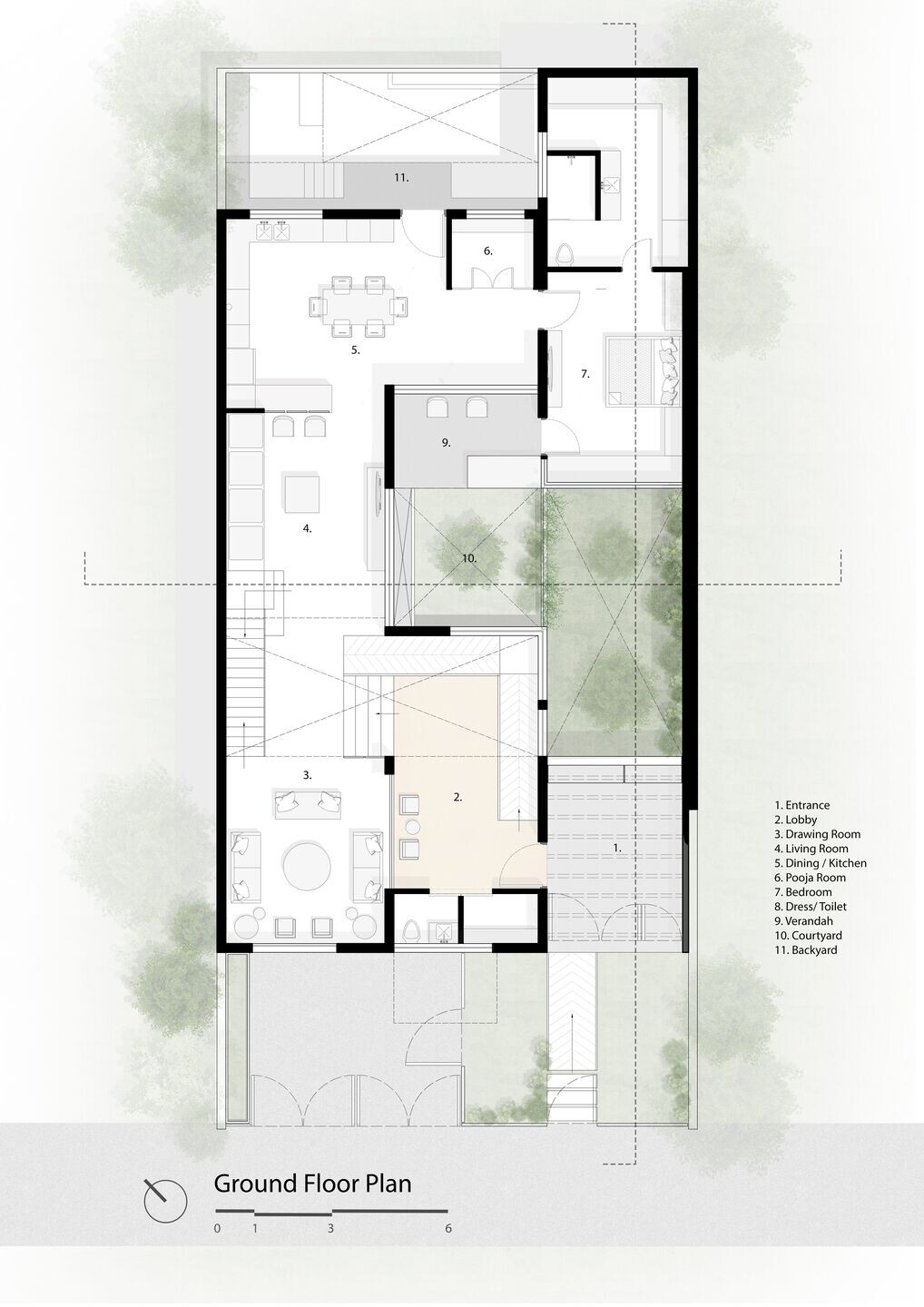Project Description
CASCADING TERRACES
The agency of making here rested with the architect-as-client, and there has been careful deliberation on re-introducing a culturally rooted domesticity. The house revolves around the spatial experience of the in-between spaces – the connections and continuity. The brief formulated was a house for a family of six with the kids - the three-generational required spaces to potentially expand, ease of movement for the elder generation, and making the ground floor a central pivot for family activities. Moving from the park-facing interiority of a row house onto a larger row house plot that (eventually) faces another, the luxury of an extended verandah would not be possible. Hence, the house believes in the expansion of the thresholds to spatially connect at multiple levels.
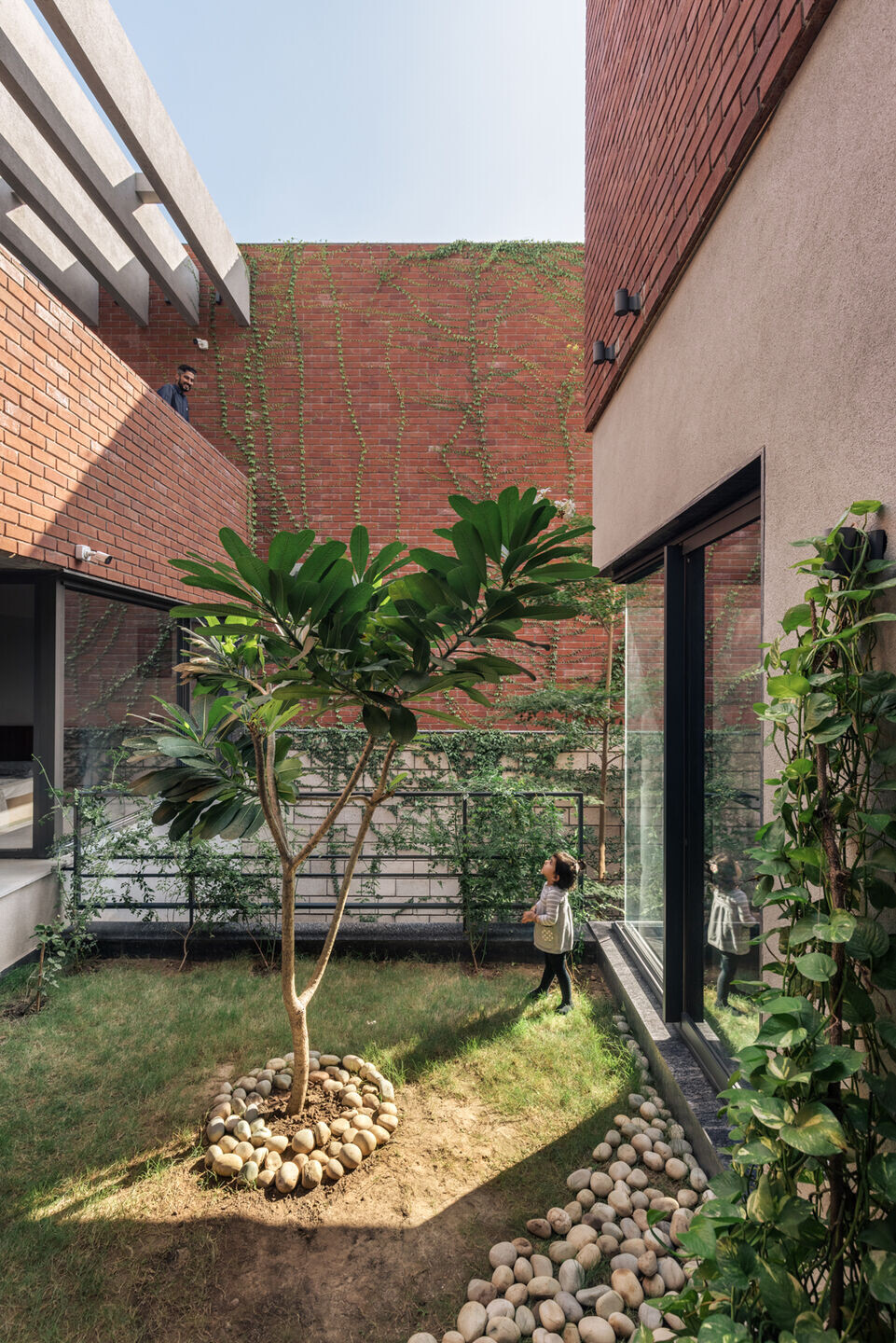
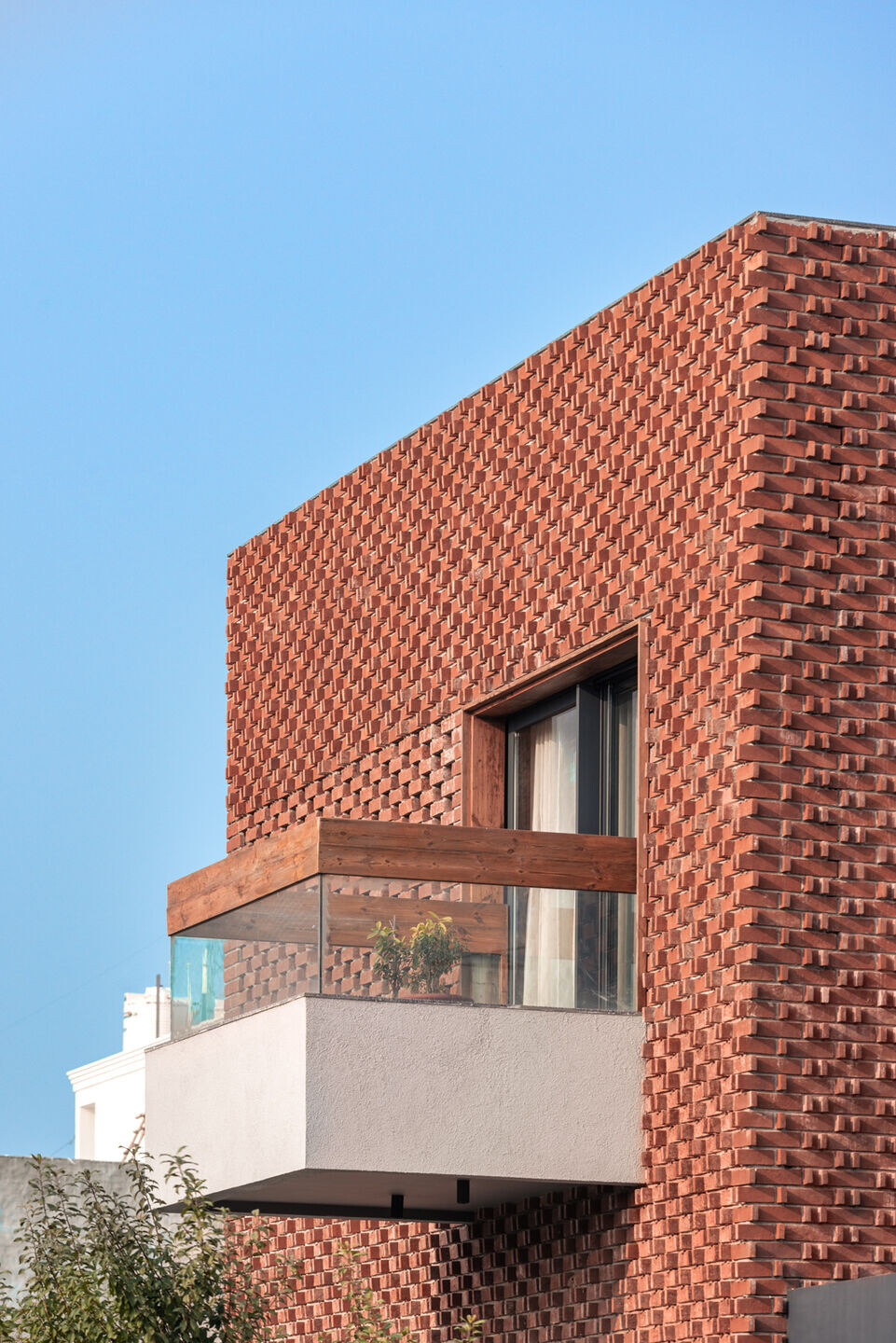
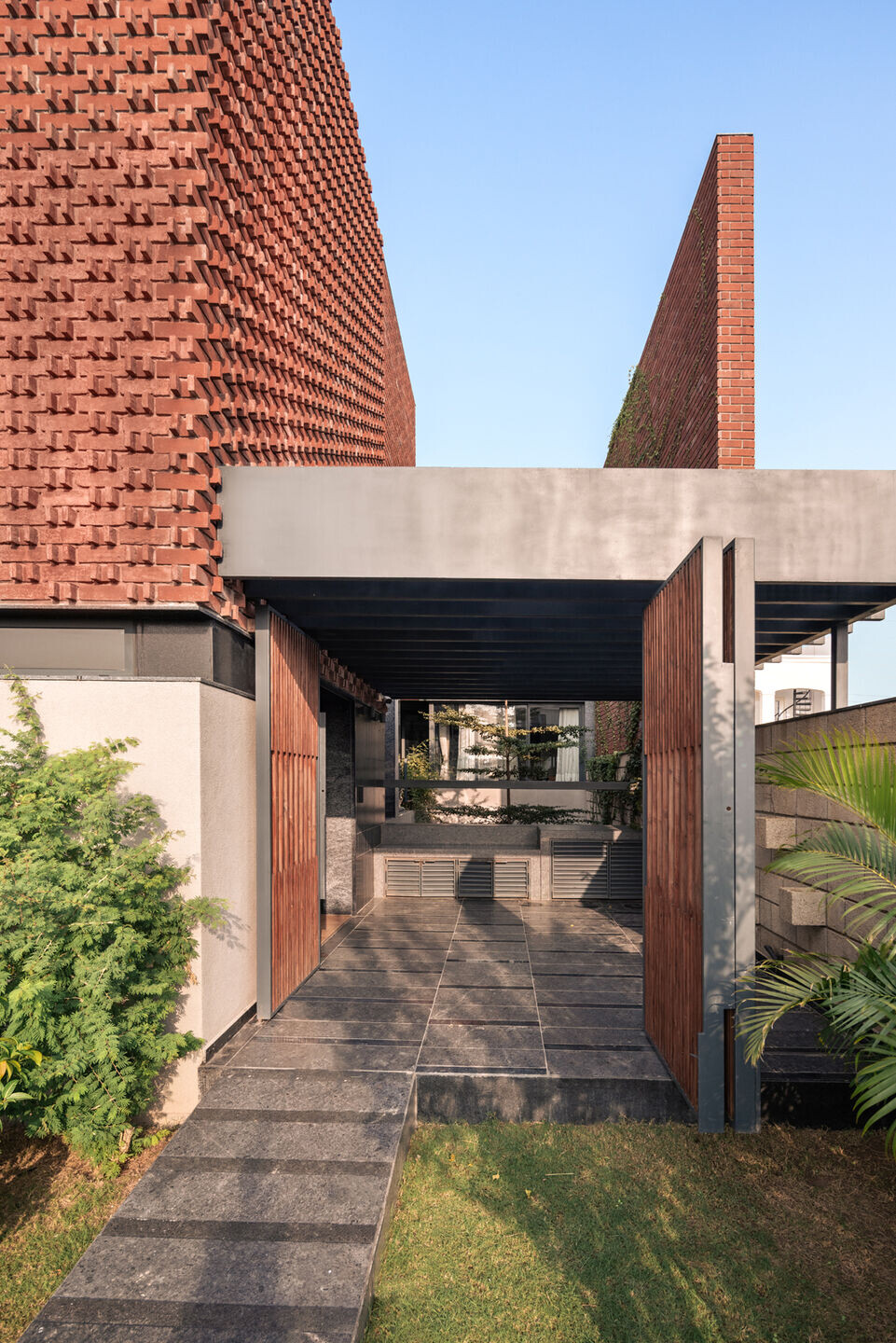
The opaqueness of the façade responds to the strong western sun, but the brick play was introduced to break the scale. The façade also hosts a brick jaali, that caters to the bedroom on the first floor as a recessed garden space that brings in filtered light and fresh air. The entrance is deep and visually connected with the threshold spaces but the axis shifts as we move indoors. The house has ramps from the road to the room at the ground level to facilitate movement.
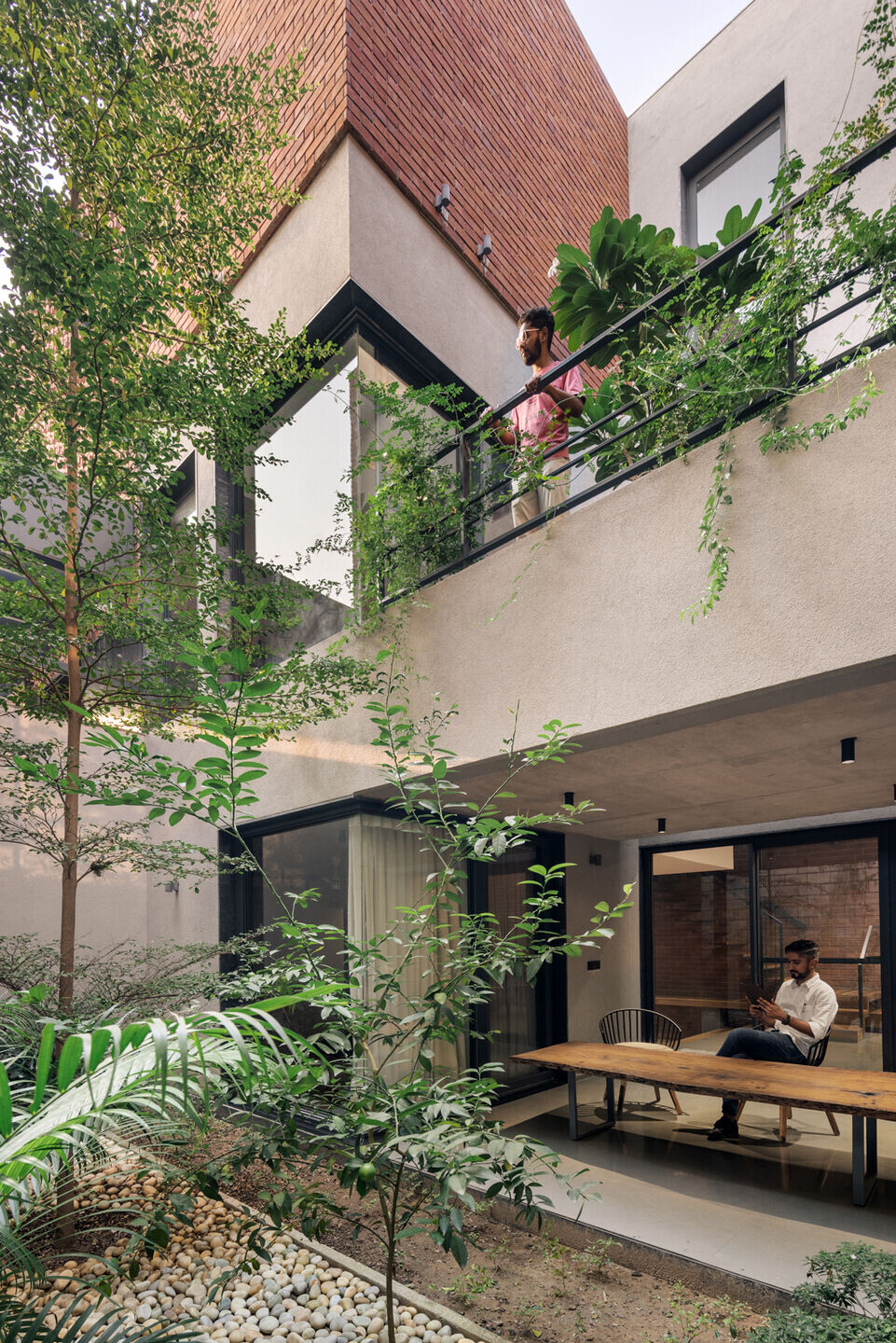
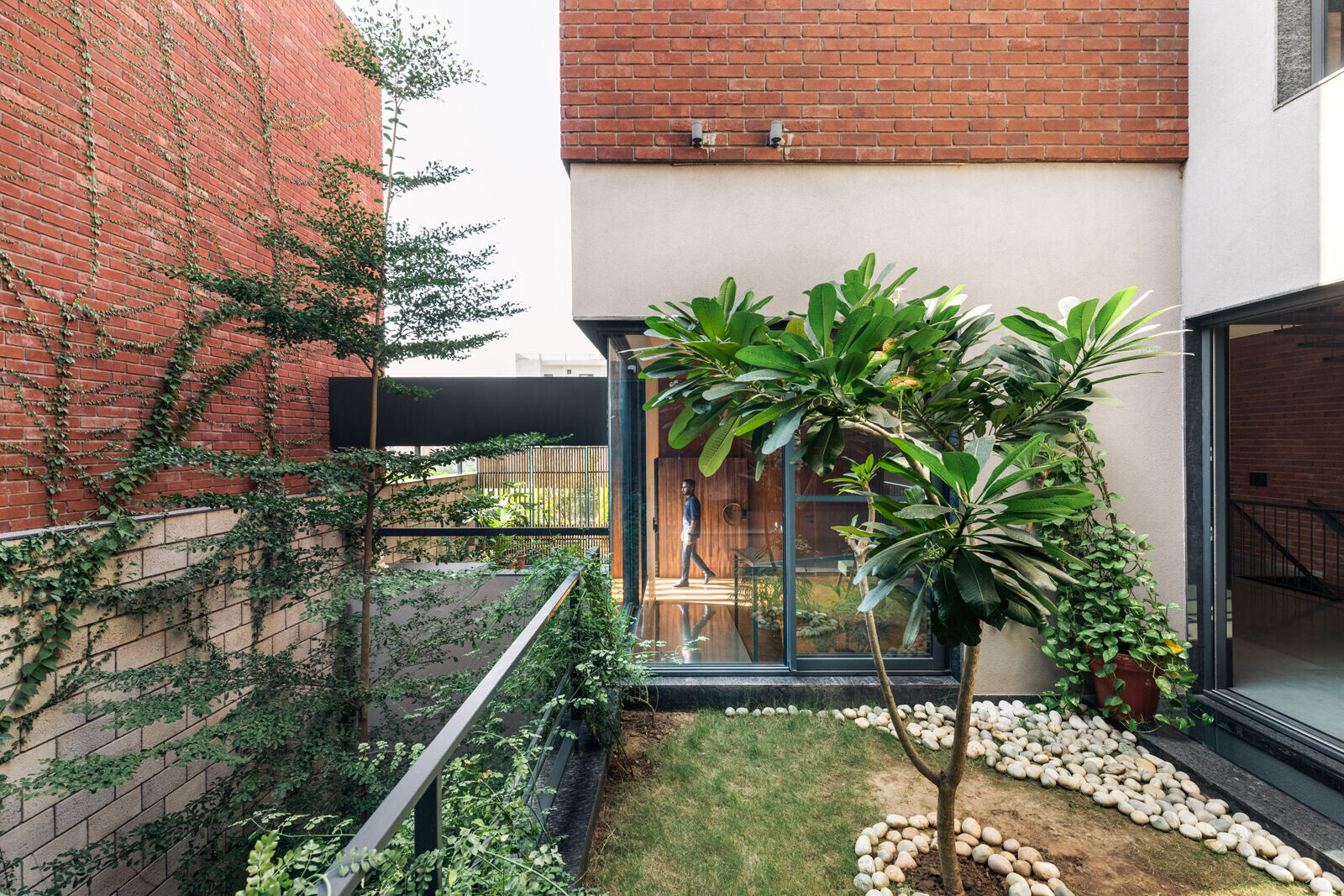

Due to the 3-foot depression from the street, the possibility of a basement was considered but keeping in mind the challenge with light, the courtyard emerges from the basement that dictates the plan. From here, upwards, the house recesses to host verandas and terraces overlooking each other. The typical ground-first-second schema, therefore, gets replaced by the basement-ground-first, centralizing the ground floor such that every part is a flight (of stairs) away. The courtyard hosts greens that grow in the indirect light including the creepers that are using the bricks as growing blocks. The tree in the center of the courtyard vertically integrates all the levels by its shared presence visible from the terraces, and the windows.
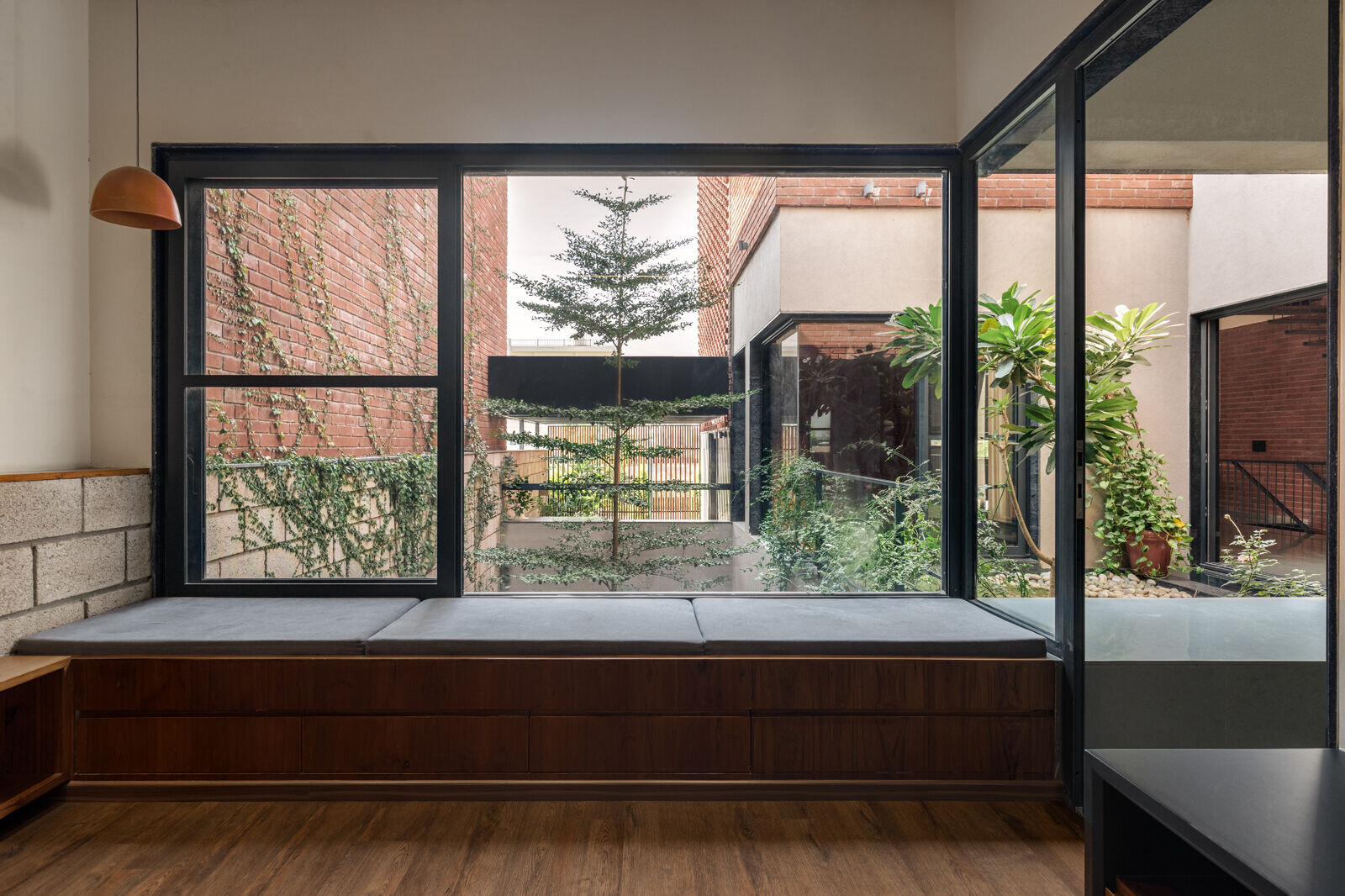


Sufficiency undermines the surplus in this house. Each floor has breakout spaces, but the common domestic functions like the living, kitchen, and dining are only on the ground floor to pitch its pivotal role as family gathering space and hosting guests. While the floor plates are larger to accommodate functional expansion, the house deliberately doesn’t have extra furniture or forceful lighting and artwork. The intent was the material textures, space continuity and an influx of sunlight and daylight are the needed respite. The materials are intrinsic to the region– brick, and stones in Kota, Jaisalmer, Kadappa, and Granite (in select areas). None of them, are cladded superficial layers but purposed to function. The house imbibes the concept of expanding the use of objects being conscious of the continuity not just of space, but the tangible materiality. The floor to the bench, bench to pedestal, or the staircase to the side table, to the seating act as seamless continuity or integrated elements of function. The house represents simplicity, sufficiency, and serenity.
